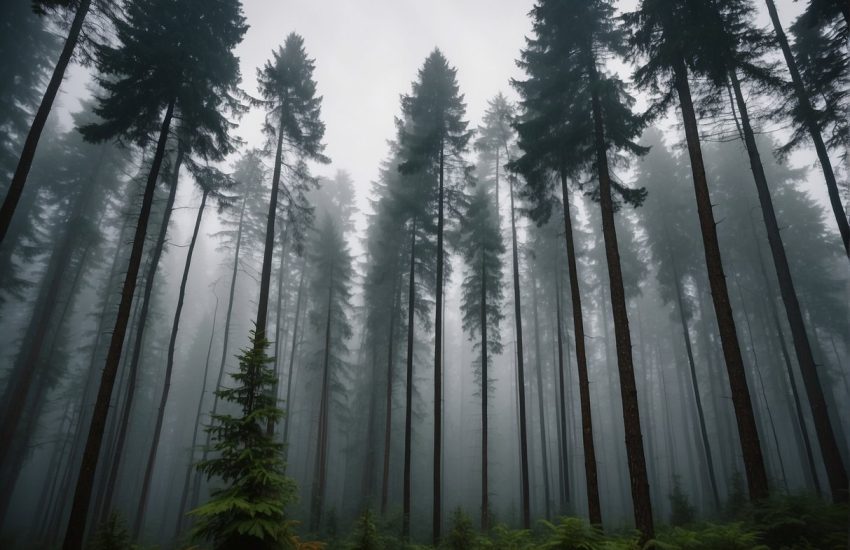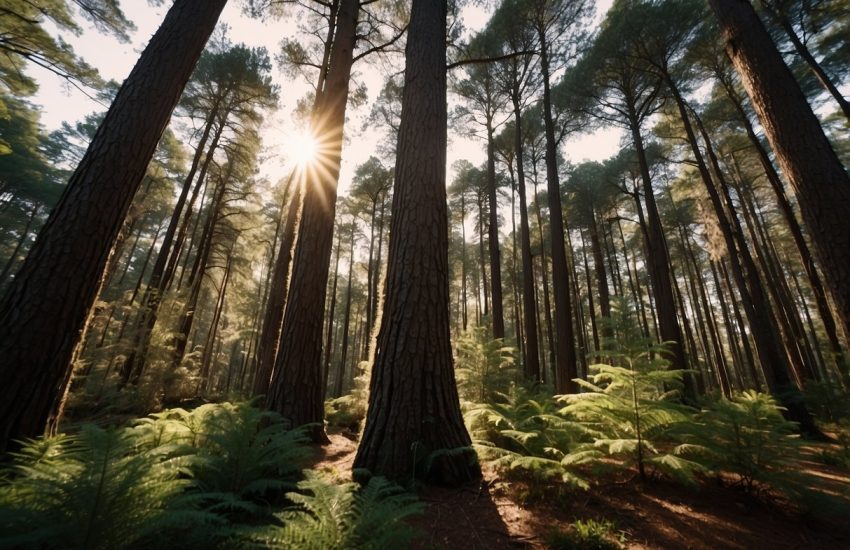10 Evergreen Trees to Plant in North Carolina
A wide range of plant life can be found in North Carolina. It is covered in various blooming plants, shrubs, and evergreen trees from the Appalachian Mountains to the Atlantic Coastal Plain. Even though many of these species are native to North Carolina, many are invasive due to the state's temperate environment, which supports a variety of life.
Evergreen trees are a great choice if you're creating a garden in North Carolina and want to help the natural ecology by including some native plants. Researchers have shown that the carbon content of the soil around evergreens is higher than that of the soil around deciduous trees or lawns. This is so because, compared to other tree species, evergreens draw more carbon from the atmosphere.
When to Plant Evergreen Trees in North Carolina
In North Carolina, spring and fall are the ideal times to plant evergreen trees. Winter is a safe time to plant most evergreens when the ground can be dug. Planting tropical and cold-sensitive evergreens in the winter is not advised, especially in the state's colder parts. Evergreen tree planting should be avoided throughout the summer. At this period, they are more susceptible to transplant and drought stress.
Planting Evergreen Trees: A Guide
Before you plant your tree, give your potted evergreen a thorough watering. Next, create a hole nearly twice the root ball's width but not quite as deep. Fill the hole evenly with your North Carolina evergreen tree. Make sure the top of the root ball is higher than the soil line that is currently there. After that, reclaim the soil by backfilling it. Deeply wet the area until water pools start forming on the ground's surface. Around your evergreen trees, create a 1 to 2-inch mound of pine straw or pine bark mulch to conserve water, retain soil moisture, safeguard the roots, and keep weeds at bay. The mulch should extend a few inches past the tree's canopy.
When to Prune Evergreen Trees in North Carolina
Most of North Carolina's evergreen trees should be pruned in the winter or early spring. Evergreen trees that bloom in the spring should be pruned after the bloom time is over to prevent removing flower buds. Pruning North Carolina evergreen trees is also a good idea in the fall when the weather is cooling off. You can always prune a little. Branches that are damaged, diseased, or dead should be removed as soon as you see them.
How to Take Care of Evergreen Trees in North Carolina
Water deeply at the base of your evergreen tree once or twice a week for the first two to three months as it grows. During the first summer, especially in the state's warmer regions, drink water once a week. Evergreen trees prefer acidic soil, allowing them to absorb nutrients more effectively. Use a balanced, slow-release fertilizer in the spring.
The Best Evergreen Trees to Grow in North Carolina
A grower should consider several factors before choosing which tree species to plant. To identify which species would produce high-quality trees in the available area and in the specified climate, various tree characteristics should be assessed.
1. Fraser Fir
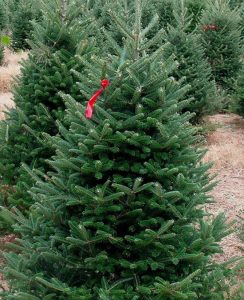
A medium-sized coniferous evergreen with unique needles is the Fraser Fir. The needles have a silver ring and are lustrous and dark green. The tree enjoys partial shade and grows best in moist, slightly acidic soil with good drainage.
When landscaping a home, the Fraser Fir is a wise choice. It grows between 6 to 12 inches annually, a moderate growth rate. It is the variety most frequently used for Christmas trees and has an excellent shape, a light aroma, and sturdy limbs.
2. Atlantic White Cedar
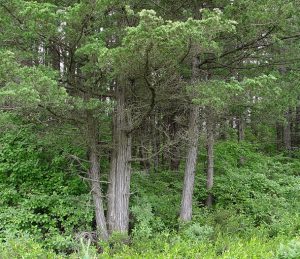
From southern Maine to northern Florida and as far west as the Mississippi, the Atlantic White Cedar can be seen growing along the coastline. It is a sturdy tree that is strong to apple-cedar rot and comparatively resistant to pests and disease. Despite preferring sandy soil with good drainage, the tree may survive in marshy or muddy soils with little to no drainage. It thrives in full or some sun. The tree requires no pruning and requires little upkeep. It quickly increases in height, gaining around 24 inches a year, and reaches a height of 50 feet.
3. Titi
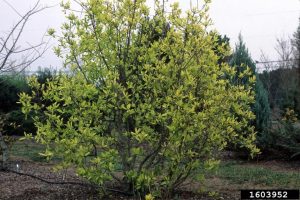
Titi is a semi-evergreen tree known as Swamp Titi, Black Titi, White Titi, Red Titi, Leatherwood, or Swamp Cyrilla. It resembles a shrub in its early and teenage stages, and as it ages, it grows into a short, slender tree. Bees prize it as a source of pollen, which they use to make honey. Titi is indigenous to West Indies, North America, and South America. It is most frequently found in peaty bogs, wet plains, riverbanks, and swamps. It thrives in partial shade, and loamy soil has fragrant flowers and eye-catching foliage and is pest-resistant.
4. Loblolly Bay
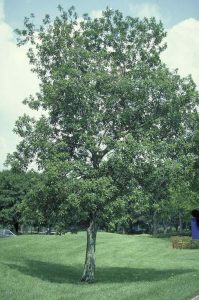
Loblolly Bay is a flowering evergreen shrub often referred to as Sweet Bay or Gordonia. It is appreciated for its year-round growth of huge, fragrant, white blossoms. The pollen serves as a food source for bees and hummingbirds.
At full maturity, Loblolly Bay may grow up to 60 feet tall and gains 24 inches per year. It likes shade and can be found in acidic, damp soil. With enough moisture, it can withstand intense sunlight.
5. Dahoon
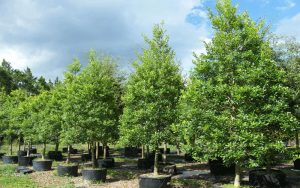
Dahoon's high level of pest and disease resistance makes it a fantastic choice for gardens and urban landscaping. It thrives in regions with poor soil, inadequate drainage, and high levels of air pollution.
Unique red berries on the Dahoon plant ripen in the fall and stay on the plant all winter. During the gray winter months, they can bring a beautiful flash of color. The shrub produces an abundance of tiny white flowers in the spring.
6. Juniper
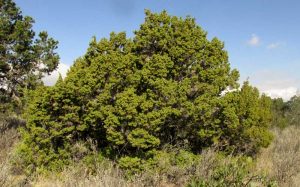
One of the most widespread trees in the world is the Common Juniper. It can grow up to 5 feet tall as a shrub in North America. In Europe, the juniper is more frequently encountered as a tree, where it can reach a height of 25 feet. The needle-like leaves of common juniper never become dull or scale-like.
The Common Juniper doesn't need to be pruned, thrives in direct sunlight, and enjoys well-drained soil. It can withstand droughts, and many bird and animal species eat its berries. Additionally, berries are used to flavor gin.
7. Eastern White Pine
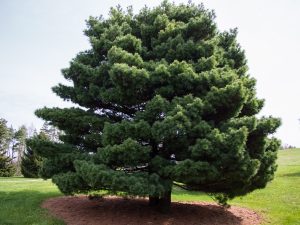
Native to western North Carolina, eastern white pine grows at elevations between 1,200 and 3,500 feet. It has good needle retention, gentle blue-green leaves, and a pleasant scent. Variation in slope, aspect, or elevation rarely threatens a plant's ability to flourish within its native range. However, a planting location beyond the tree's natural area must be carefully selected. White pine shouldn't be planted in moist areas since it is prone to root infections. Aphids and other insects occasionally attack white pine.
8. Virginia Pine
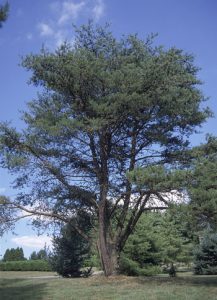
Native The usage of Virginia pine as a Christmas tree is often discouraged due to its poor form and color. It may be grown on various soils, including lower mountains and coastal plains. Rotations of 4 to 6 years are feasible due to the rapid growth. Quality is currently only average.
Virginia pine is far less susceptible to soil fertility than Fraser fir or white pine, yet fertile, well-drained soil is desirable for rapid growth and dark green leaves.
9. Canadian Yew
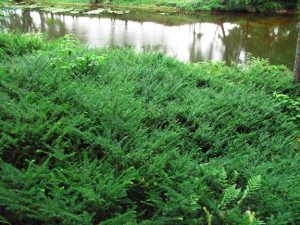
The Canadian Yew is a native of Canada but has a wide natural range that extends throughout North America, including North Carolina. It has dark green foliage that resembles needles and produces spreading limbs; however, it does not produce flowers or fruits.
When winter arrives, they will turn a reddish-brown color. This natural evergreen shrub is typically grown as a low hedgerow or as ground cover. This adaptive shrub can survive in low temperatures since it can withstand Canadian winters.
Along with other yews, the Canadian Yew is a member of the group of plants that can tolerate shadow and yet survive. It also prefers to stay out of the winter sun, heat, and drought to preserve soil moisture.
10. Dwarf Palmetto
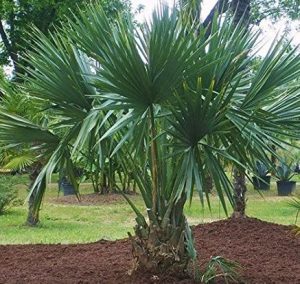
Sabal minor, a member of the small palm family, is more well-known by the name Dwarf Palmetto. Once planted in your outdoor space, it exhibits fan-shaped leaves that spread gorgeously upward, igniting the tropical season. This little shrub is grown frequently as an accent tree or shrub because of its distinctive characteristic. This evergreen shrub also tolerates dryness well and does well in areas with inadequate drainage. However, during establishing, give the plant the right amount of water. It is also regarded as the Sabal with the highest
tolerance to cold.
Conclusion
Maintaining a natural, eco-friendly garden is a gratifying method to support the environment. Native plant species help to stabilize soil, stop erosion, and promote the expansion of local animal and bird populations.
A native evergreen species is a beautiful addition to a native species garden you are considering creating in your North Carolina home. These plants will bring you joy for many years.

